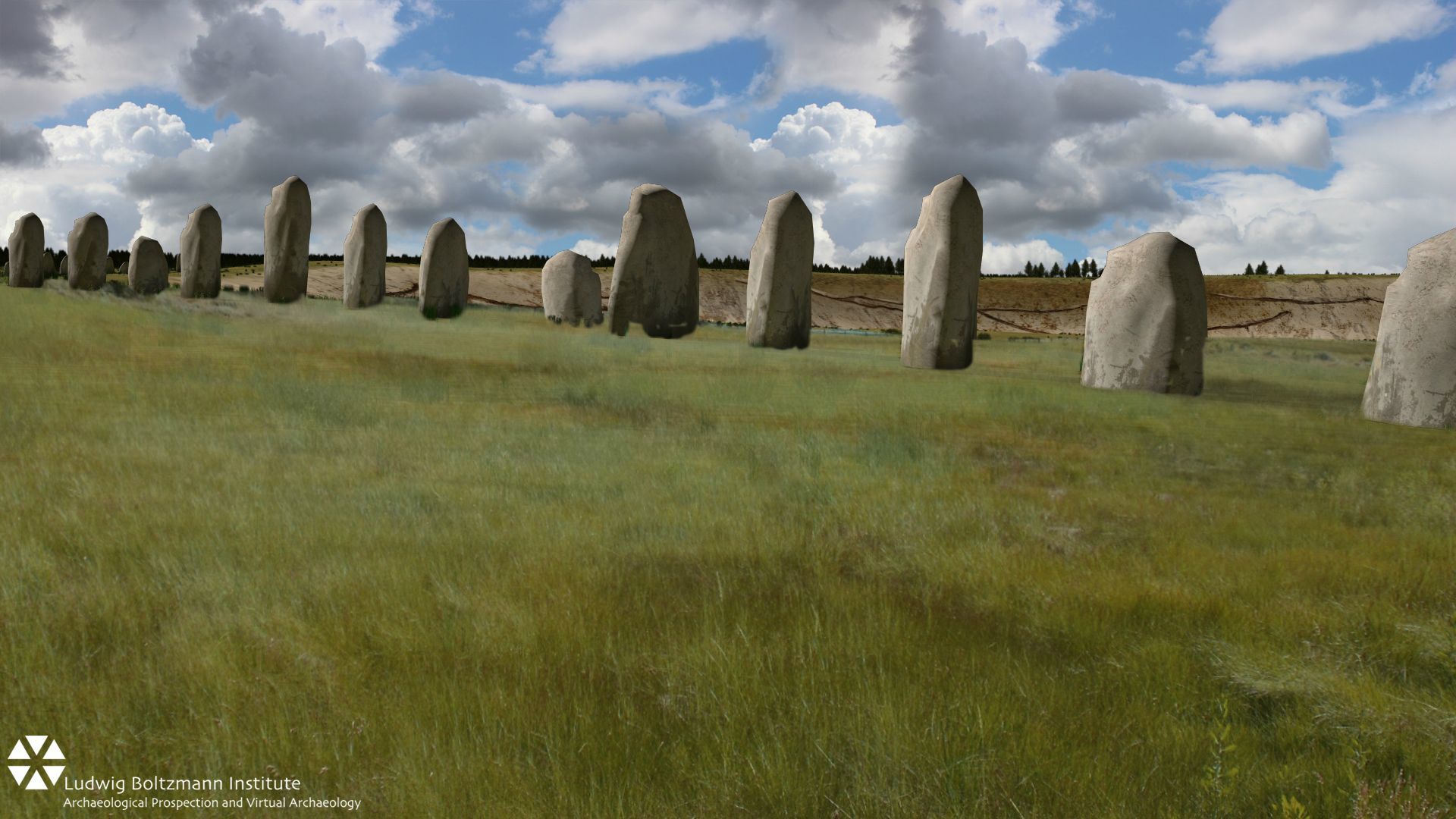Somebody call Indiana Jones, because the biggest archaeological find of the 21st century has just been discovered. Archaeologists have just discovered a massive stone monument buried two miles from Britain’s Stonehenge.
A huge arrangement of 90 stones in a C formation was discovered near Stonehenge – the mysterious stone monument believed to be tied to ancient druids and destroyed by Clark Griswold in European Vacation – using ground-penetrating radar, according to reports. The radar was able to image 30 intact stones standing around 4.5 meters in height and 60 stones that had been broken.
In the archaeology world, this is pretty much the equivalent of Guns N Roses getting back together or the Chicago Bears winning the Super Bowl – it’s big and nobody expected it.
“What we are starting to see is the largest surviving stone monument, preserved underneath a bank, that has ever been discovered in Britain and possibly in Europe,” said Vince Gaffney, an archaeologist at Bradford University who leads the Stonehenge Hidden Landscape project. “This is archaeology on steroids.”
So how old are these underground rocks and what was the “Superhenge” used for? Human sacrifice? A UFO landing pad? A woolly mammoth petting zoo? Gaffney and his team estimate the stones to be around 4,500 years old, around a thousand years older than Stonehenge. The exact purpose of the stone formation isn’t known, but “we presume it to be a ritual arena of some sort,” said Gaffney. Lot of rituals going on in the ancient world.
Of course, the discovery also opens up a whole new chapter for its connection to Stonehenge. “Everything written previously about the Stonehenge landscape and the ancient monuments within it will need to be rewritten,” Paul Garwood, an archaeologist and lead historian on the project at the University of Birmingham, told CNN.
Stonehenge Hidden Landscape project which sprawls over 4 sq miles of Salisbury Plain in Wiltshire has been a five-year venture to investigate the area and includes two ginormous pits to the north of Stonehenge which appear to form an astronomical arrangement:
”On midsummer’s day, the eastern pit’s alignment with the rising sun and the western pit’s alignment with the setting sun intersect where Stonehenge was built 400 years later”.
There are no plans to excavate any of the stones at the moment, and archaeologists will continue to search for clues regarding its purpose. In the meantime, we can probably look forward to an all new History Channel special that ties it to aliens.


